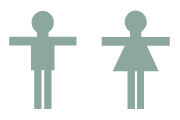
|
 Syria: Fuel-Air Bombs Strike School Syria: Fuel-Air Bombs Strike School
(New York ) – A Syrian government airstrike using fuel-air explosive bombs hit outside a secondary school in the opposition-held city of Raqqa on September 29, 2013, killing at least 14 civilians. At least 12 of those killed were students attending their first day of classes.
A Raqqa resident who went to the school immediately after the attack told Human Rights Watch that he saw 14 bodies, including some without limbs. A doctor from National Hospital in Raqqa said he saw 12 dead bodies, most of them students, and the hospital treated 25 wounded.
The blast wounds and flash burns visible on victims in videos and photographs, coupled with the body positions and few shrapnel wounds, indicates the use of fuel-air explosives (FAE), also known as “vacuum bombs,” Human Rights Watch said. More powerful than conventional high-explosive munitions of comparable size, fuel-air explosivesinflict extensive damage over a wide area, and are therefore prone to indiscriminate impact in populated areas.
“While the world tries to bring Syria’s chemical weapons under control, government forces are killing civilians with other extremely powerful weapons,” said Priyanka Motaparthy, Middle East child rights researcher at Human Rights Watch. “Even students on their first day of school are not safe.”
Fuel-air explosive bombs are not an incendiary or chemical weapon. But because of their wide area effects, which make them highly indiscriminate weapons, Human Rights Watch believes fuel-air explosives should never be used in populated areas.
Two other Raqqa residents, a lawyer and an opposition activist, told Human Rights Watch that a government jet dropped bombs that struck the courtyard of the Ibn Tufail Commercial Secondary School at approximately 8:05 a.m. They said no armed people were in or around the school and no opposition administration offices or headquarters were nearby. Before the start of the school year, the school had housed a few hundred internally displaced people from the Aleppo area.
Videos and photos from the site show two impact craters between 10 and 14 meters apart in the southwest corner of the courtyard near the main gate. Both craters are between 2 and 3 meters in diameter and 30 to 60 centimeters deep, which is consistent with an air-burst FAE that does not explode on impact with the ground.
Satellite imagery taken on September 26 shows that the school is surrounded by fields and a few small houses, with no visible signs of military structures or activity. That increases the likelihood that the government targeted the school itself, Human Rights Watch said.
(New York ) – A Syrian government airstrike using fuel-air explosive bombs hit outside a secondary school in the opposition-held city of Raqqa on September 29, 2013, killing at least 14 civilians. At least 12 of those killed were students attending their first day of classes.
A Raqqa resident who went to the school immediately after the attack told Human Rights Watch that he saw 14 bodies, including some without limbs. A doctor from National Hospital in Raqqa said he saw 12 dead bodies, most of them students, and the hospital treated 25 wounded.
The blast wounds and flash burns visible on victims in videos and photographs, coupled with the body positions and few shrapnel wounds, indicates the use of fuel-air explosives (FAE), also known as “vacuum bombs,” Human Rights Watch said. More powerful than conventional high-explosive munitions of comparable size, fuel-air explosivesinflict extensive damage over a wide area, and are therefore prone to indiscriminate impact in populated areas.
“While the world tries to bring Syria’s chemical weapons under control, government forces are killing civilians with other extremely powerful weapons,” said Priyanka Motaparthy, Middle East child rights researcher at Human Rights Watch. “Even students on their first day of school are not safe.”
Fuel-air explosive bombs are not an incendiary or chemical weapon. But because of their wide area effects, which make them highly indiscriminate weapons, Human Rights Watch believes fuel-air explosives should never be used in populated areas.
Two other Raqqa residents, a lawyer and an opposition activist, told Human Rights Watch that a government jet dropped bombs that struck the courtyard of the Ibn Tufail Commercial Secondary School at approximately 8:05 a.m. They said no armed people were in or around the school and no opposition administration offices or headquarters were nearby. Before the start of the school year, the school had housed a few hundred internally displaced people from the Aleppo area.
Videos and photos from the site show two impact craters between 10 and 14 meters apart in the southwest corner of the courtyard near the main gate. Both craters are between 2 and 3 meters in diameter and 30 to 60 centimeters deep, which is consistent with an air-burst FAE that does not explode on impact with the ground.
Satellite imagery taken on September 26 shows that the school is surrounded by fields and a few small houses, with no visible signs of military structures or activity. That increases the likelihood that the government targeted the school itself, Human Rights Watch said.
(2013-10-02/hrw)
|





